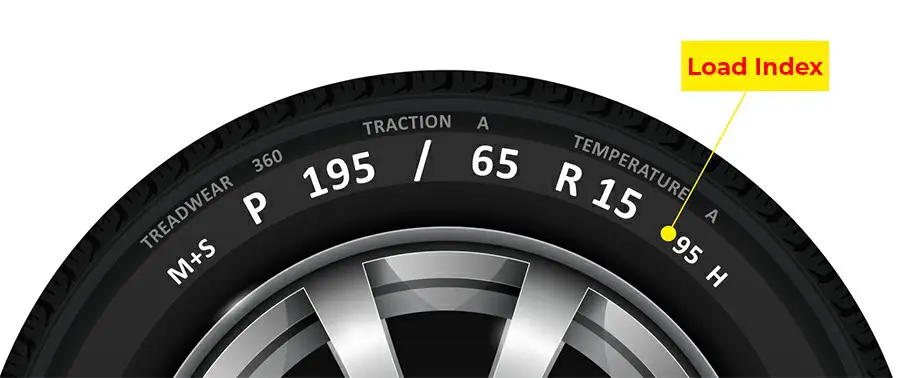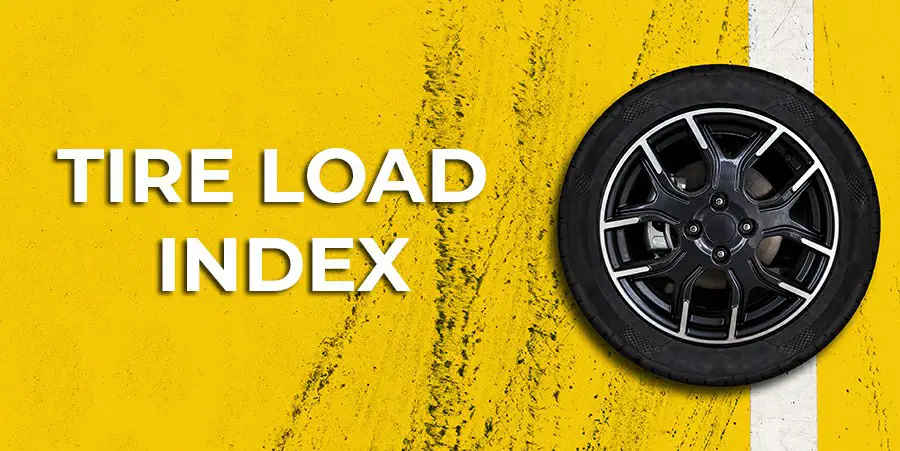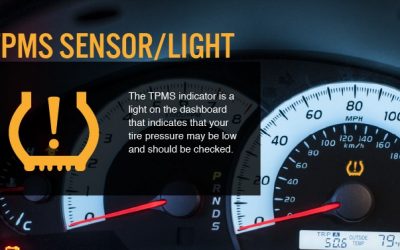If you are traveling in a car full of people or giving someone a ride, it’s vital to know how much weight your tires can handle through the tire load index. Keep reading to learn how to decipher the load index and speed rating of your tires.
What Is Tire Load Index?
As skilled engineers developed and built your vehicle, they did some calculations to figure out how much weight it could safely transport with the right tire size and pressure. These calculations set the stage for a concept called “tire load index.”
Based on the proper tire size and pressure, the tire load index illustrates how much weight your automobile can transport in a safe way. The greater the weight-carrying capacity of a tire, the higher its load index number.
How to know the load index of your car’s tires? You can find recommended tire sizes and load ratings in your owner’s manual. In case the manual is out of your reach, take a look at the tiny numbers in the tires that come with your car.
Is The Tire Load Index Crucial?
Definitely! Your tires can get damaged and wear out prematurely if you put too much weight on them. When you overburden your tires, disaster might hit, whether it’s in the shape of progressive deterioration or a fully flat tire.
Worse still, you may run the risk of a tire blowout.
Let’s think about when your car is carrying a box full of cement bricks. And when your tires are overburdened, much like your legs buckle under the weight, they might entirely fail. Therefore, overloading your tires is never a wise decision!
In addition, a tire has many other important indicators that you can refer to such as: Tire Speed Rating, Tire Dot Code, all numbers mean on tires.
How To Find The Load Index On A Tire?

The load index information is provided after the tire size information on the sidewall of your tire. Let’s see the image of the tire load rating for an example of its position.
A tire with a load index of 95, for example, can sustain 690kg (1512 Ibs) of weight. When purchasing a new tire, you should consider load ratings and speed ratings simultaneously.
Tire Load Index Chart
The majority of passenger-car tire load indices are in the 75-100 range, although some are higher. The index chart depicts the relationship between load indices and weight.
| Load Index | Load (lbs) | Load Index | Load (lbs) | Load Index | Load (lbs) |
|---|---|---|---|---|---|
| 0 | 99 | 50 | 419 | 100 | 1764 |
| 1 | 102 | 51 | 430 | 101 | 1819 |
| 2 | 105 | 52 | 441 | 102 | 1874 |
| 3 | 107 | 53 | 454 | 103 | 1929 |
| 4 | 110 | 54 | 467 | 104 | 1984 |
| 5 | 114 | 55 | 481 | 105 | 2039 |
| 6 | 117 | 56 | 494 | 106 | 2094 |
| 7 | 120 | 57 | 507 | 107 | 2149 |
| 8 | 123 | 58 | 520 | 108 | 2205 |
| 9 | 128 | 59 | 536 | 109 | 2271 |
| 10 | 132 | 60 | 551 | 110 | 2337 |
| 11 | 136 | 61 | 567 | 111 | 2403 |
| 12 | 139 | 62 | 584 | 112 | 2469 |
| 13 | 143 | 63 | 600 | 113 | 2535 |
| 14 | 148 | 64 | 617 | 114 | 2601 |
| 15 | 152 | 65 | 639 | 115 | 2679 |
| 16 | 157 | 66 | 639 | 116 | 2756 |
| 17 | 161 | 67 | 677 | 117 | 2833 |
| 18 | 165 | 68 | 694 | 118 | 2910 |
| 19 | 171 | 69 | 716 | 119 | 2998 |
| 20 | 176 | 70 | 739 | 120 | 3086 |
| 21 | 182 | 71 | 761 | 121 | 3197 |
| 22 | 187 | 72 | 783 | 122 | 3307 |
| 23 | 193 | 73 | 805 | 123 | 3417 |
| 24 | 198 | 74 | 827 | 124 | 3527 |
| 25 | 204 | 75 | 852 | 125 | 3638 |
| 26 | 209 | 76 | 882 | 126 | 3748 |
| 27 | 215 | 77 | 908 | 127 | 3858 |
| 28 | 220 | 78 | 937 | 128 | 3968 |
| 29 | 227 | 79 | 963 | 129 | 4079 |
| 30 | 234 | 80 | 992 | 130 | 4189 |
| 31 | 240 | 81 | 1019 | 131 | 4289 |
| 32 | 247 | 82 | 1047 | 132 | 4409 |
| 33 | 254 | 83 | 1074 | 133 | 4541 |
| 34 | 260 | 84 | 1102 | 134 | 4674 |
| 35 | 267 | 85 | 1135 | 135 | 4806 |
| 36 | 276 | 86 | 1168 | 136 | 4938 |
| 37 | 282 | 87 | 1201 | 137 | 5071 |
| 38 | 291 | 88 | 1235 | 138 | 5203 |
| 39 | 300 | 89 | 1279 | 139 | 5357 |
| 40 | 309 | 90 | 1323 | 140 | 5512 |
| 41 | 320 | 91 | 1356 | 141 | 5677 |
| 42 | 331 | 92 | 1389 | 142 | 5842 |
| 43 | 342 | 93 | 1433 | 143 | 6008 |
| 44 | 353 | 94 | 1477 | 144 | 6173 |
| 45 | 364 | 95 | 1521 | 145 | 6393 |
| 46 | 375 | 96 | 1565 | 146 | 6614 |
| 47 | 386 | 97 | 1609 | 147 | 6779 |
| 48 | 397 | 98 | 1653 | 148 | 6844 |
| 49 | 408 | 99 | 1709 | 149 | 7165 |
| 150 | 7385 |
How To Use The Tire Load Rating Chart?
The load index rating tells you how much weight a tire can bear. In other words, it’s the maximum weight that your tire can safely hold.
The load indices of passenger vehicles and light truck tires typically vary from 70 to 126.
Assume that your tire’s load index is 85. We may deduce from this chart that it can support 1,135 pounds at maximum air pressure. To calculate your car’s maximum load-carrying capability, multiply that by 4 tires (4 tires * 1,135 lbs = 4,540 lbs).
Note that you should never put tires with a lesser load-bearing capability than the factory-installed tires on your vehicle. The greater the weight carrying capacity of a tire, the higher its load index number.
When it comes time to replace your tires, keep in mind that the factory-fitted tires will have the correct tire load rating, so stay to that number or higher.
Considering Load Index When Tire Shopping
The tire load index, as you can see, is essential when you opt for new tires. To the best of our knowledge, it’s always a wise idea to go for tires that can accommodate the Gross Vehicle Weight Rating of your vehicle (GVWR). The owner’s manual will include this number, so don’t hesitate to check the tire load index chart to examine how many pounds each tire can support. From there, you can see whether a pair of tires will fit your vehicle or not.








